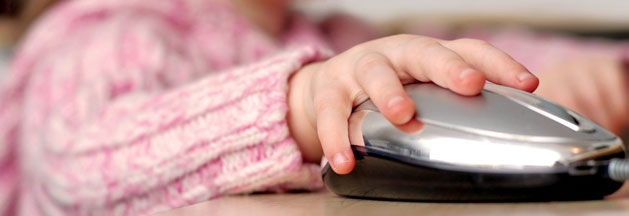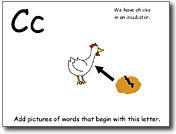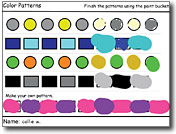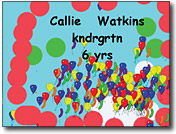
Use technology to build communication skills in students with physical disabilities.

Callie is an extremely bright Kindergartner, with what her father terms is a “really wild sense of humor.” Sounds pretty typical for your standard 6 year old. But Callie is anything but typical. She has a nerve disorder called Spinal Muscular Atrophy. Callie’s cognitive function is completely unaffected, but the disease has left her motor skills severely limited. Weakness near her spine means she cannot roll over on her own, and lack of energy to her sensory motor neurons makes holding a pencil nearly impossible.
As she gets older and begins to write, communication tools like email and blogs, paired with assistive devices such as a mini-keyboard, will help her share her thoughts, ideas, and dreams. But what about in Kindergarten, when much of the day is spent drawing and writing with crayons and markers? This is where Callie’s story with Pixie begins.

In the fall of 2006, Mike Hakkarinen began having all of the students at Emmitsburg School in Frederick County, Maryland, use Pixie during their weekly visits to the computer lab. The Kindergartners used Pixie to paint pictures of animals in their habitats, illustrate math problems, complete patterning activities, and show their understanding of a story they had read. With the help of a miniature touch pad, Callie was able to do all of these activities with ease, and her proficiency matched, and often exceeded, the other students.
But when she returned to her classroom, and the entire class continued to work on projects with crayons and markers, she was not able to use her hands to create and show all of the wonderful and interesting ideas in her mind. Noticing her success in the lab and frustration in the classroom, Mike loaded a copy of Pixie on a computer in her classroom. He worked with Callie’s teacher, Carolyn Miller, so that every time the class worked with pencil, markers, and crayons, Callie could do the same work on the computer with Pixie. “Using Pixie made such a change for Callie,” says Mike, “it really allowed her to do all the same things the other students were doing and made her feel part of the classroom.”

Ms. Eila Tegethoff, the Special Education Assistant to Callie, noticed a change right away. Callie enjoyed not only creating work in Pixie, but also changing it and erasing. She spent a lot of time on the computer, more time than with traditional drawing, because she could make changes with the click of her mouse. Eila also noted that her work with the software supported her work off the computer as well; “The more she played with Pixie, and the more she experienced success, the more her handwriting and desire to work with pencil and paper improved.”
Callie’s success has prompted Mrs. Carolyn Miller, her Kindergarten teacher, to expand Pixie use to the entire classroom. She used Pixie to to differentiate her instruction so that students could work at whatever level was most appropriate, whether they were at the labeling picture stage or already writing sentences using their own spelling.

Pixie’s approachable interface makes using it in Kindergarten a snap, and “this feature really makes a difference with Callie,” say her parents, who encourage her to be independent and try to find tools that will make that possible. With Pixie, this Kindergartner can really show her possibilities!

Follow us on Instagram for daily inspiration

Create a thought web, cluster, flowchart, or other graphic organizer for a lesson
8 first projects to get students using technology
Creative, digital book reviews
Fun and powerful ideas with animated characters

Wixie
Share your ideas, imagination, and understanding through writing, art, voice, and video.

Rubric Maker
Create custom rubrics for your classroom.

Pics4Learning
A curated, copyright-friendly image library that is safe and free for education.

Wriddle
Write, record, and illustrate a sentence.

Get creative classroom ideas delivered straight to your inbox once a month.
Topics